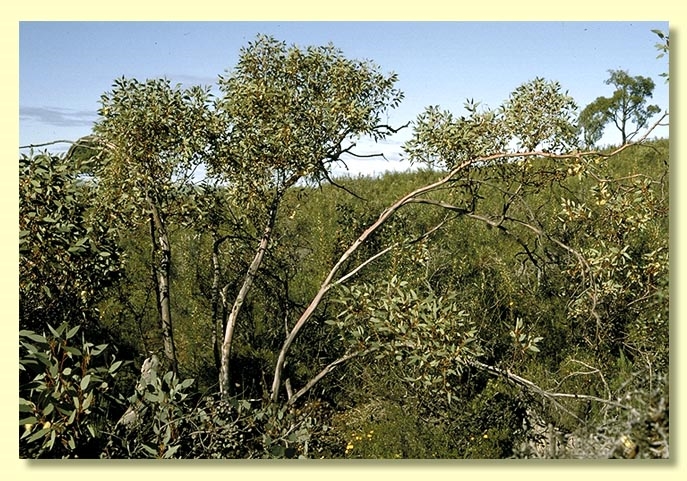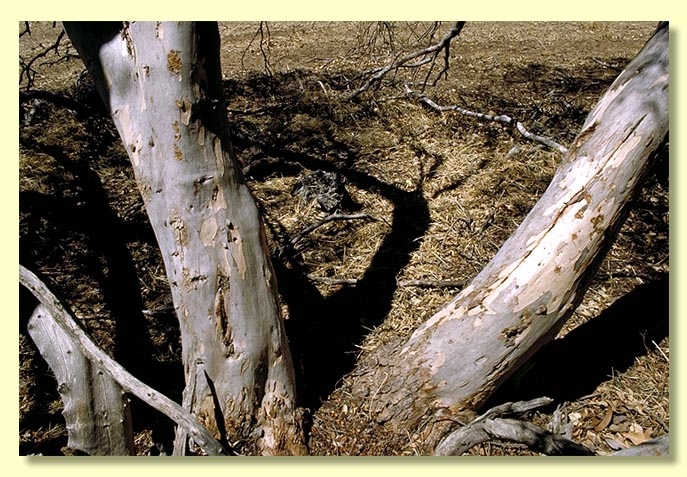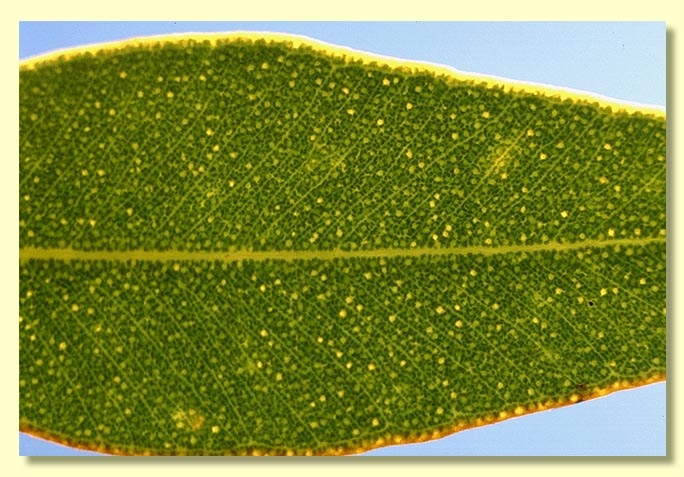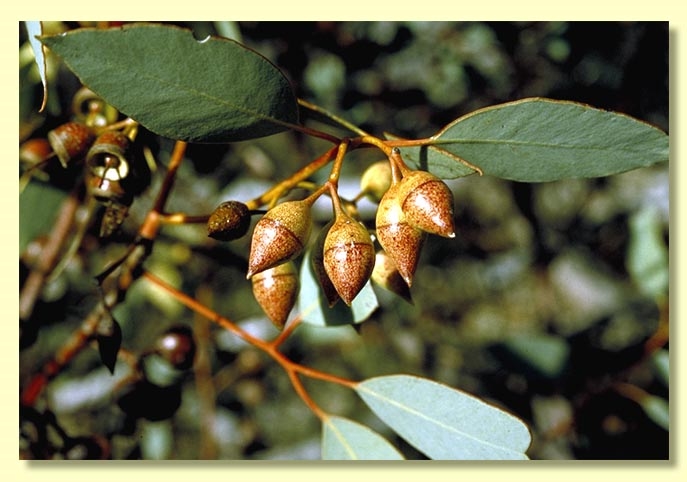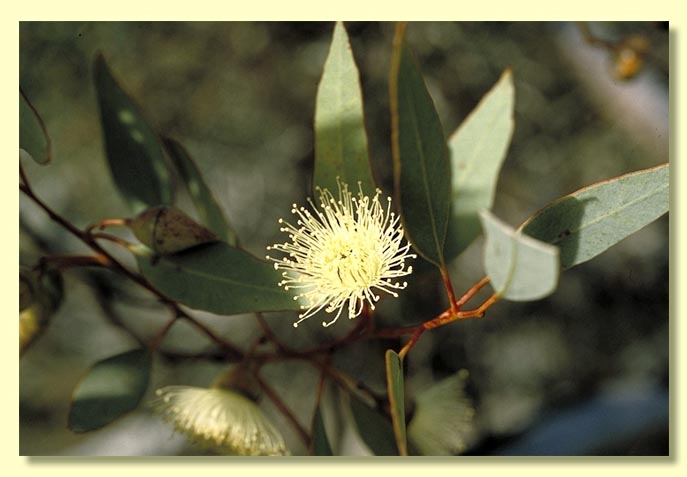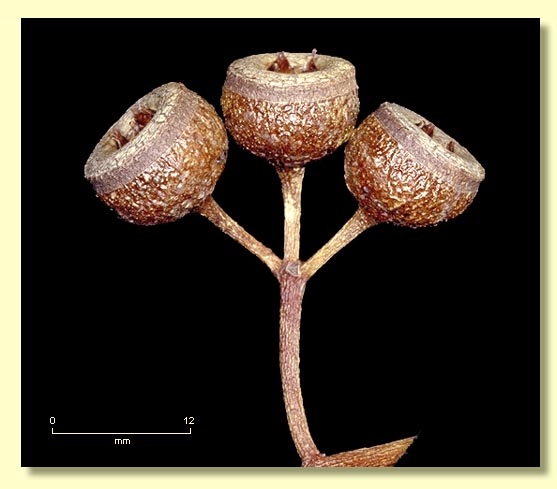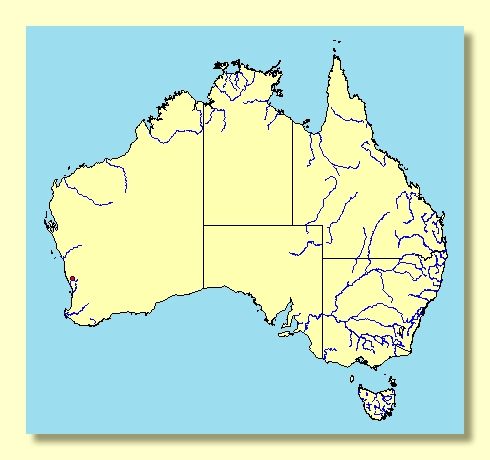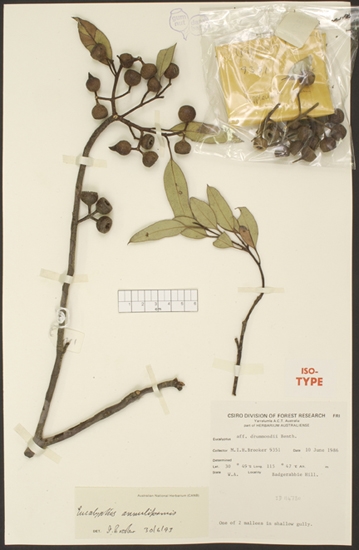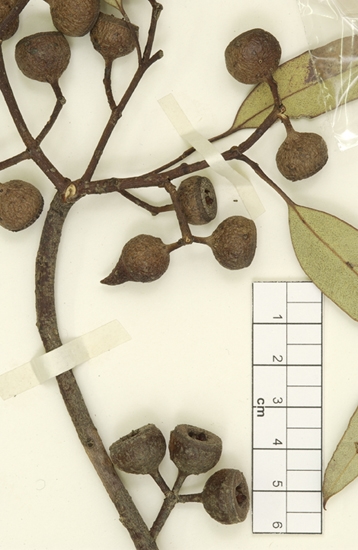Euclid - Online edition
Eucalyptus annuliformis
Eucalyptus | Symphyomyrtus | Bisectae | Destitutae | Curviptera | Xylocarpae
Bark smooth throughout, greyish.
Branchlets lacking oil glands in the pith.
Juvenile growth (coppice or field seedlings to 50 cm): juvenile leaves always petiolate, alternate, elliptical to broadly ovate, 5–7 cm long, 2–3.5 cm wide, dull, green.
Adult leaves alternate, petioles 1–1.5 cm long; blade elliptical to broadly lanceolate, 4–6.5 cm long, 1–1.7 cm wide, base tapering to petiole, margin entire, apex acute, concolorous, dull, green, side-veins usually greater than 45° to midrib or sometimes acute, reticulation dense, intramarginal vein close to margin, oil glands scattered intersectional, large.
Inflorescence axillary unbranched, peduncles 1–1.5 cm long, buds 7 per umbel, pedicellate (pedicels 0.4–0.6 cm long). Mature buds ovoid (1.1–1.7 cm long, 0.5–0.8 cm wide), scar present, operculum conical or sometimes slightly beaked, outer stamens erect, inner stamens inflexed, anthers oblong, versatile, dorsifixed, dehiscing by longitudinal slits, style long and straight, stigma blunt, locules 3 or 4, the placentae each with 4 vertical rows of ovules. Flowers white.
Fruit pedicellate (pedicels 0.5–0.8 cm long), usually hemispherical, 0.9–1.2 cm long, 1–1.4 cm wide, disc broad and flat sloping inwards slightly at the inner edge, valves 3 or 4, at rim level.
Seeds rarely formed and when formed not fertile; brown, 1–2 mm long, flattened-ovoid, dorsal surface more or less smooth, hilum ventral. Fruit contain mostly chaff particles.
Cultivated seedlings not seen.
Flowering has been recorded in July.
A mallee endemic to Western Australia, occuring north of Perth, where known only from a few plants on Badgerabbie Hill south-east of Dandaragan and 2 farms to the north. Bark is smooth and the crown dull green.
Eucalyptus annuliformis probably belongs in Eucalyptus subgenus Symphyomyrtus section Bisectae subsection Destitutae because buds have two opercula, branchlets lack oil glands in the pith and internal bud features are like other species in the group. Cotyledons, however, have not been seen. Within this subsection E. annuliformis fits best in series Curviptera, one of about 30 closely related species and subspecies which are further characterised by having large buds in umbels of one, three or seven, staminal filaments erect or oblique (rarely inflexed) in bud, and large fruit usually with an ascending disc and exserted valves.
E. annuliformis appears to be closely related to E. drummondii and may be a hybrid species deriving from it, although the other parent species is not obvious. It differs by the larger, non-glaucous buds with beaked opercula, and by the fruit with an inward-sloping disc, which is unusual for this group of species. It produces heavy bud and fruit crops but repeated collections have resulted in a copious yield of chaff and very few seed, none of which has germinated.

